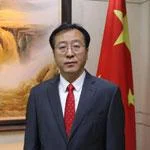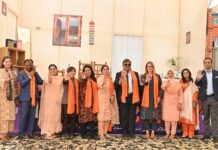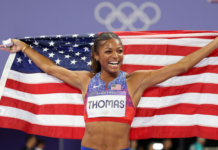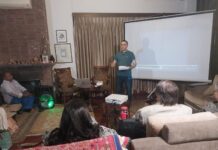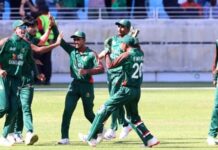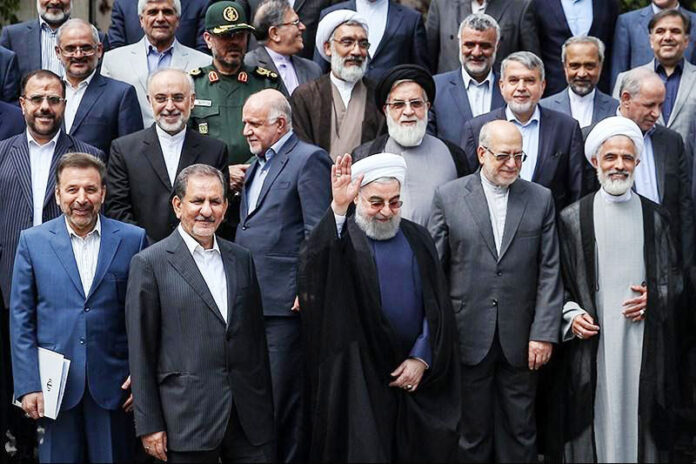Iran conservative president Ibrahim Raeesi along with his wife, Dr Jamila Ilm ul Huda, were in the USA a week ago in connection with the United Nation General Assembly session. Unlike the low profile of spouses of heads of states during the last 45 years of the Islamic republic’s existence, the President’s wife granted many interviews to the American channels and she was in the headlines as much as her husband in the realm of geopolitics. On the other front, the conservative administration, after having fruitless negotiations over revival of the JCPOA (the nuclear deal), found the way to trade funds for prisoners. The two instances point to the Iranian establishment’s adoption of what they had rejected as a reform agenda.
Given the fact that the system barely came out of the crisis last year; the reality that after the lambasting of the reform camp politically by the establishment in Iran, the only option available for the established order was the election of conservative Raeesi and to get him to do the work of reform. It was ironic that all the work, which was to be done, was that advocated and implemented by the reform group when in power
The conservatives, backed by the establishment, contested the reform group at every available opportunity. In fact the incumbent President’s father-in-law Ilm ul Huda, a senior cleric himself, in fact acted as a parallel administration to the reformist governor of Khorasan north during much of the (2013 to 2017) period. It may be recalled that at one time, the mystical music concerts approved by the Ministry of Irshad (the ministry at the heart of Hijab controversy) were opposed tooth and nail by the conservative cleric.
The reformist camp was unlucky during its second tenure as it was further pushed under the bus when the succeeding Republican administration under Donald Trump unilaterally scrapped the JCPOA, depriving the reformist administration in Tehran of its winning chip in the next presidential elections due in 2021, rather in the context of Iranian politics too.
The crippling sanctions, as against the economic dividends of the JCPOA, consequently created a backlash; which made it difficult for the reform camp sympathizers to defend it convincingly. The results of the 2021 presidential elections were predictable. Given the few options the system offers, the more viable option for the man on the Tehran Street was voting for the former caretaker of the Imam Reza shrine, Ibrahim Raeesi.
To answer the question as to how the reform group emerged in the otherwise regimented Iranian political discourse, one needs to go through the trajectory of events after the Khomeini era. The post-war calm and reconstruction under the stewardship of Khomeini were operational until his demise; Khamenei and Rafsanjani made ways for the common Iranian to review his lifestyle and wants. The war years were times of highly regimented welfare state model, with little room for democratic niceties and other freedom of expression. The period was punctuated with dullish art forms which were barely enough for the local audience; let alone for the international audience to review.
That situation prompted currents within the system and like-minded individuals joined hands to form a reform-oriented group, not formalized as such. It may be pointed that a who-is-who of these persons included people known for their left of centre economic policies or radical record, like being part of the US embassy takeover in 1979 or membership of pre-1979 guerilla organizations opposed to the pro-US monarchy of the Shah.
The first shocker for the system was in the surprise victory of an unassuming cabinet member in the then Rafsanjani cabinet until 1997, Syed Muhammad Khatami, as the seventh President of the Islamic republic in the June 1997 presidential elections. Nicknamed the ‘Smiling Syed’, his nickname was partly indicative as to why he was elected. The youth, tired of the stern administration of the system, wanted a few freedoms, which they thought; they could have if they voted for a reformist candidate.
For obvious reasons, people associated with the creative arts voted massively for the reformist President. It was not an unusual scene for many young actors of the budding Iranian industry to formalize their marriage ceremony through the recitation of verses by none other than the President.
However the clerical establishment thought it would be a compromise to its ideals, without realizing that all the reformists were trying to do was to mellow down the republic to a level where it could compete and talk with the world outside. For obvious reasons, the 1997 to 2005 period was not punctuated not many reform initiatives.#
Except for strides on the creative scene, where Iranian cinema made a place for itself and in the IT sector where Iran was increasingly visible in the open source software scene, the established order in Iran was not ready to accord even that much of an image change. The 2005 elections brought in yet another variant of radical politician, Mahmoud Ahmadinejad. His reelection bid in 2009 in fact brought the reform movement and the establishment face to face. Many in the reform camp wanted Khatami to run again for the presidency. Yet the two-time president thought it opportune to leave the place for one time Prime Minister of war years Mir Husain Mosavi to contest.
The June 2009 elections exposed the Iranian system to its most serious challenge ever from within. The establishment found a clear divide uptil the IRGC, where many commanders were not happy with the way their own nominee Ahmadinejad, dealt with the protest. The showdown culminated in the indefinite house arrest of the losing reformist presidential candidate Mir Husain Mosavi, which continues until now.
Having recovered from the shock of 2009, the Iranian establishment still allowed the sense to prevail, when it allowed the reformist candidate Hasan Rouhani to win the presidential contest two times in 2013 and 2017. In 2017, it was Raeesi who was fielded as a conservative candidate. A small episode during the campaign reported by the media in effect demonstrated that the conservative camp was not averse to a reform agenda as such, but was scared that anyone else might undertake it.
One renowned pop singer, Amir Tatloo, was invited during the election campaign by Raeesi to hold concert in Mashhad. Though this did not materialize, the playing of the singer’s songs from Raeesi campaign offices in fact showed that the conservatives were not averse to adopting the armoury of the reform camp, if need arose.
With the reform camp torpedoed by the system within and from outside by the Trump Administration, with the safety valve the system had in the form of reformists gone; the war between the supporters and opponents has had more clear dividing lines. Gone were the arguments of adjustment within the system. The Mahsa Amini issue was one such demonstration that if any situation is not controlled, it can rapidly translate into the ‘now or never’ scenario.
Given the fact that the system barely came out of the crisis last year; the reality that after the lambasting of the reform camp politically by the establishment in Iran, the only option available for the established order was the election of conservative Raeesi and to get him to do the work of reform. It was ironic that all the work, which was to be done, was that which was advocated and implemented by the reform group when in power.
The supposed release of frozen funds by the USA in the form of multiple prisoner swaps all indicate that the conservatives with the backing of the clerical establishment are not shy to achieve or emulate the reformist camp agenda. The current administration being soft on Hijab, prisoner swapping a new form of JCPOA funds release, trade promotion with the Arab world; an unbelievable opening with Egypt indicate a long list before the 2025 elections approach. Iran seems to be losing its cutting edge at the altar of an angry public at home.
That situation throws out two scenarios; either the Iranian system is too weak internally to take on the pressure without its safety valve reform camp; or else it is a strategic overhaul of the system, aimed at correcting the system before the new administration is due for election. Not to forget the revolution generation passes out if Khamenei exits the scene because of natural demise (he is 84, after all).





